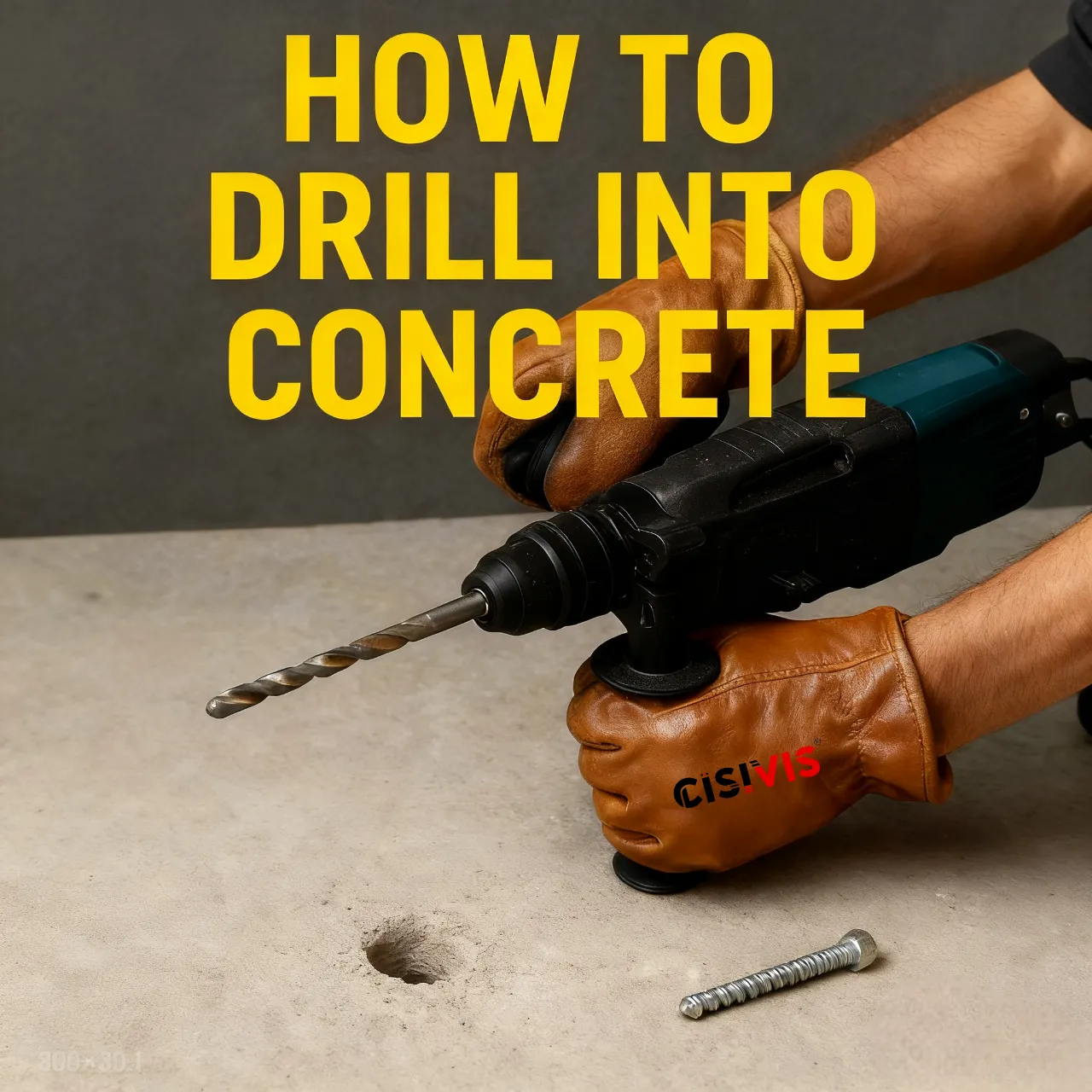How to Drill Into Concrete (Without Cracks or Mistakes): A Simple Guide for Beginners Leave a comment
Drilling into concrete can feel challenging because concrete is tough, solid, and difficult to break through. If you use the wrong tools or technique, the hole might crack, chip, or ruin your drill bit. But don’t worry — this beginner-friendly guide will teach you how to drill into concrete safely and with confidence.
In this article, you’ll learn the best tips, tools, and step-by-step instructions on how to drill into concrete the right way. We’ll cover:
- What tools and safety gear you need
- The best timing for drilling into concrete
- A simple process to drill accurately without causing damage
- Helpful tricks to make drilling easier and faster
- How to fix common drilling problems
- Where to find trusted tools for your DIY or business projects
What You Need Before Drilling Into Concrete
Before you start drilling, make sure you have the right tools and take important safety steps.
✅ Tools You Will Need
| Tool | Why You Need It |
|---|---|
| Hammer drill or rotary hammer | Gives power and vibration to break up concrete |
| Masonry drill bits (carbide-tipped) | Designed to cut through concrete |
| Concrete screw anchors | To mount shelves, TVs, fixtures, etc. |
| Marker or masking tape | Helps mark hole location and controls depth |
| Vacuum or brush | Removes dust so bit can cut smoothly |
| Water spray bottle (optional) | Helps cool drill and control dust |
➡ Do NOT use wood or metal drill bits. They will burn out quickly in concrete.
✅ Safety Gear
- Safety goggles – concrete dust can hurt your eyes
- Gloves – protects hands from vibration and sharp debris
- Dust mask – concrete dust is harmful to breathe
⏰ The Best Time to Drill Into Concrete
✅ Concrete should be fully cured
Concrete becomes hard and stable after about 28 days. Before that, drilling can cause cracks.
❌ Avoid drilling on:
- Very cold days (below freezing) → concrete becomes brittle
- Very hot days → drilling dust may clog the hole faster
How to Drill Into Concrete Without Damaging It
Even if you have never drilled before, follow these simple steps:
✅ Step-by-Step Instructions
1️⃣ Mark the spot
Use a pencil or masking tape to mark exactly where you want the hole.
2️⃣ Start with a small pilot hole
Use a smaller masonry bit first. Drill slowly on low speed for 5–10 seconds to create a guide hole.
3️⃣ Switch to the correct drill bit size
Use the size needed for your screw or anchor.
4️⃣ Drill with firm but gentle pressure
Let the drill do the work. Don’t push too hard.
5️⃣ Use hammer mode
If using a hammer drill, turn on hammer function once the bit is inside the concrete.
6️⃣ Pull out the drill sometimes
Every few seconds, pull the drill out slightly—
✅ This removes dust
✅ Keeps bit from overheating
✅ Helps the drilling go faster
7️⃣ If you hit rebar or a stone
Stop and change angle slightly. Do not force it.
8️⃣ Clean the hole
Use a vacuum, air blower, or brush to remove dust.
9️⃣ Insert anchor and screw
Make sure it fits tightly and sits straight.
Tips & Tricks for Drilling Concrete Like a Pro
Here are the best tricks for beginners:
✅ Keep the drill bit cool
Spray a little water or take breaks to avoid overheating.
✅ Use carbide-tipped masonry bits only
Steel bits will bend or melt. Carbide resists heat and friction.
✅ Choose the right screw length
For most small and medium tasks like shelves or wall hooks:
1.5–3 inch (38–75 mm) concrete screws work well — research on concrete screw anchors notes that nominal embedment depths or setting depths greater than 40 mm (≈1.57 inch) are recommended for safe capacity and performance.
✅ Use depth control
Put a piece of tape on the bit to mark how deep you need to drill.
✅ Drill straight and steady
A crooked hole may crack the concrete or loosen the anchor.
Troubleshooting & Common Problems
Here are common mistakes—and how to fix them:
| Problem | Cause | Solution |
|---|---|---|
| Concrete cracks | Too much force, wrong bit, concrete too new | Use hammer drill, slow and steady, drill only cured concrete |
| Bit not cutting | Wrong bit type or dull bit | Switch to carbide masonry bit |
| Hole too large | Bit moved or concrete crumbly | Use anchor epoxy or a slightly larger anchor |
| Dust blocks progress | Not stopping to clean hole | Pull out drill sometimes to remove dust |
| Drill jams into rebar | Hit internal steel | Change angle or use rebar cutter |
| Hole not deep enough | Bit slipping or overheating | Use tape depth mark and cool bit with water |
| Concrete falls apart | Concrete mixed with too little cement or frozen weather | Drill slower; choose a stronger spot or expand hole with chemical anchor |
✅ Quick FAQ
❓ Can I drill concrete with a regular drill?
➡ Yes, but it will be slow and may burn the bit. Hammer drill is recommended.
❓ What drill bit should I use?
➡ Carbide-tipped masonry bits only.
❓ Do I need water?
➡ yes,helps cooling and dust control.
❓ Why does my concrete crack?
➡ Too much force or drilling too close to the edge.
Summary
Learning how to drill into concrete is simple when you remember the basics:
✔ Choose the proper tools
✔ Drill at a slow, steady speed
✔ Clear out dust while drilling
✔ Follow each step carefully
And if any issues come up, stay calm — most problems are easy to solve once you know how to drill into concrete correctly.
⭐ Professional Tools from CISIVIS
If you want reliable concrete drilling tools that help avoid mistakes, check out CISIVIS.
We provide:
- Electric drills with brush motor overheat protection
- Copper motors for longer life on premium models
- Battery display and easy-to-use functions
- OEM & ODM support for brand customization
- Flexible upgrade choices based on your budget
Whether you are a DIY user or a wholesale buyer, we help your business grow with strong product quality and competitive pricing.
👉 If you need concrete drilling tools in bulk, visit the website in my profile and contact us anytime!




